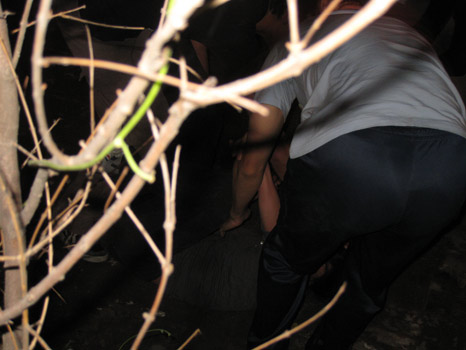 第二次排练进程展示,2009年9月22日 | from the 2nd open rehearsal, 22 September 2009
第二次排练进程展示,2009年9月22日 | from the 2nd open rehearsal, 22 September 2009
Bourriaud argues that art of the 1990s takes as its theoretical horizon “the realm of human interactions and its social context, rather than the assertion of an independent and private symbolic space” (RA, p. 14). In other words, relational art works seek to establish intersubjective encounters (be these literal or potential) in which meaning is elaborated collectively (RA, p. 18) rather than in the privatized space of individual consumption. The implication is that this work inverses the goals of Greenbergian modernism. Rather than a discrete, portable, autonomous work of art that transcends its context, relational art is entirely beholden to the contingencies of its environment and audience. Moreover, this audience is envisaged as a community: rather than a one-to-one relationship between work of art and viewer, relational art sets up situations in which viewers are not just addressed as a collective, social entity, but are actually given the wherewithal to create a community, however temporary or utopian this may be.
[from Claire Bishop’s “Antagonism & Relational Aesthetics”]
You must be logged in to post a comment.
Johnnie Lanzi
I found a great…
Augustine Neglia
I found a great…
Waylon Leiker
I found a great…
Del Sakoda
I found a great…
Shelton Orlowski
I found a great…
Almeda Bergami
I found a great…